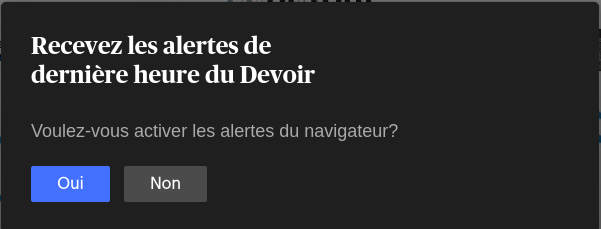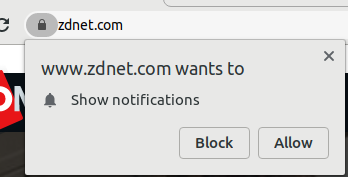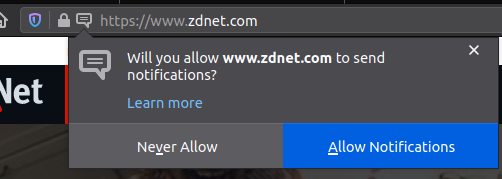Web Browser Notifications
Introduction
Notifications and myself have a love/hate relationship to summarize things. If it’s not the people who send one. sentence. per. message, it’s the hundreds of emails I get from companies asking for my opinion following a purchase, support call, or event attendance. Perhaps I need to practice better notification hygiene, or maybe the tools I use need to find a better way to manage notifications, especially web browser.
OS
Some platforms have gotten better at managing notifications. Windows mutes notifications when you’re in full-screen mode, Android allows you to have notification “queues” to either mute or disable all notifications of a certain type, and iOS/macOS ask you when an app starts up for the first time whether you want to enable notifications for it or not. Nobody’s perfect, but it seems that all OSes do something to help mitigate the notification deluge these days.
Web Browsers
This is where things start to get a little finicky. Web browser notifications are by no means a new thing, but it’s certainly not something you can say we’ve had for a long time.
I’ll be honest, it’s very rare that I allow any website to send me notifications. There’s very little need for me to have a website notifications, especially when the website is related to news of any sort. There’s nothing that I need to know so urgently related to the news considering that we (Canada) are not in any active wars on our (Canadian) territory that I’m aware of.
Even outside of news websites, I still can’t find any reason to be notified of anything that’s not directed right at me. I don’t need to know that Jacob4388 just had skittles for the third time this week, I really don’t care if Netflix’s Binge Me If You Can series just came out, and, trust me, I’m not interested to find out that Derek Jeter might have hit another home run this season.
It might be this reason that when a website asks my web browser for permission to send notifications without me even having the time to read a word of their posted content, that I become so aggrivated. But it’s not exactly that that’s inspired me to write this. It was a website that did things a little differently that put my mind in a different place.
Web Browser Prompts
Most websites that want you to enable notifications (for one reason or another), ask the browser for permission immediately. The moment your page is loaded, if they were going to ask for notifications, you’ll get a prompt from your web browser that the site is asking for notification permission. It’s almost as bad as the immediate request for you to sign up to their mailing list.
But then Le Devoir did something differently. They asked me directly, through the viewport, whether I wanted to be notified of newsworthy articles like so:

Instead of simply poking the browser to say “Hey, I want permission to send the user notifications,” they asked me, the user, whether I wanted to receive the notifications they wished to send me.
This is a start contrast to the way Chrome just pops up something above the entire Chrome UI asking if the website can send notifications:

But even Firefox has gotten better by simply wiggling a notification message icon in the URL bar rather than just popping up their equivalient of the prompt:

Conclusion
Something about having the notification permission prompt pop over the UI irks me more than just seeing the prompt I was delivered from Le Devoir, via the website’s viewport. It’s much more of an intrusion and lifeless interaction. There’s very little context given as to what notifications I’ll be sent, of what use they’ll be to me, and why the website wishes to send me notifications in the first place.
If web developers could have a little more humanity and stop seeing every web browser as just a client of a website and as a person who’s browsing the web, maybe the behaviour of prompts like this would change to be a little less jarring.